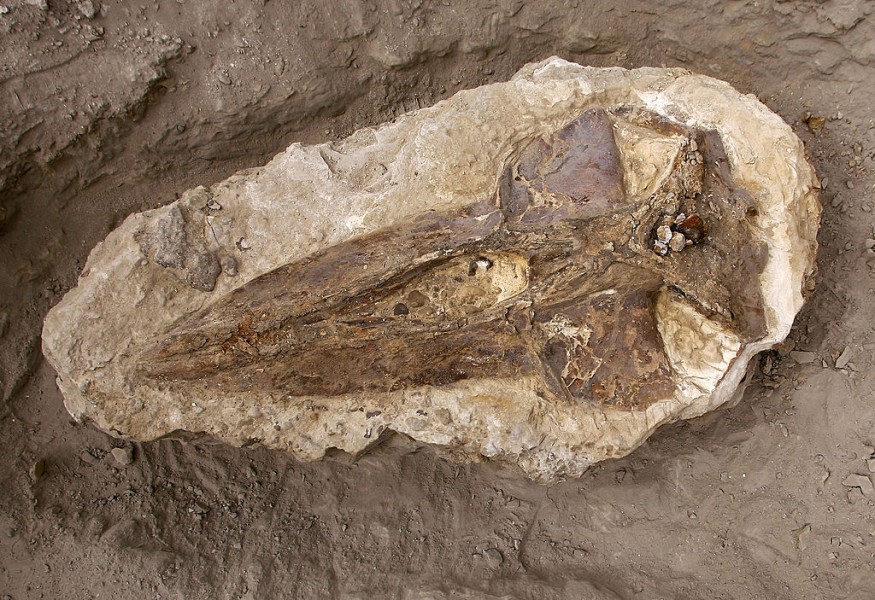An odd aquatic creature splashing about in the oceans of Earth over half a million years ago appears to be the earliest relative of the vertebrate family ever discovered to date.
As specified in a ScienceAlert report, these creatures are called "yunnanozoans," dating to the Early Cambrian about 518 years ago.
A strange creature that sloshed about in Earth's oceans over half a billion years ago seems to be the earliest vertebrate relative we've found to date.https://t.co/3IIXHWNijy#TECH #Technology #technews #programming #software
— HATINC 🇵🇸 (@HatProgrammers) July 7, 2022
Essentially, paleontologists have found that Carttilaginous features present in their fossilized remnants are comparable to modern vertebrates.
This then proposes that the animals are stem vertebrates, an extinct sister-group to the group from which today's vertebrates are descended.
ALSO READ : Dinosaur Footprints Discovered in Wales, Imprint Made By 200-Million-Year-Old Triassic Sauropod

'Yunnanozoans'
The research team led by Qingyi Tian of Nanjing University and the Chinese Academy of Sciences in China reported that pharyngeal arches are a key innovation that possibly contributed to the evolution of the jaws and the braincase of vertebrates.
They added that the pharyngeal skeleton of controversial Cambrian animals, known as "yunnanozoans," may comprise the oldest fossil evidence that contains the early evolution of the arches, yet its association with that of vertebrates remains disputed.
The investigators said that by investigating additional samples in previously unexplored techniques, they discovered evidence that yunnanozoan branchial arches comprise cellular cartilage with an extracellular matrix dominated by microfibrils, a feature once considered specific to vertebrates.
Yunnnozoans are extremely old, and very odd. For several decades, scientists have been puzzling over where such a creature fits in the tree of life, based on research and competing interpretations of prehistoric fossils recovered from the Maotianshan Shales in China.
Fossil Findings
It was in the hope of clarifying the issue that Tian and his colleagues embarked on the research of over 120 newly collected young yunnanozoan fossils.
Such fossils were subject to a range of methods that had not been applied to yunnanozoans in the past, which include "X-ray microtomography, scanning, and transmission electron microscopy," among others.
The pharyngeal arch, on the other hand, is a structure that exists during the embryonic development of vertebrate organisms and is the predecessor to a number of various parts of the jaw and face, depending on the organism.
Specifically, in fish, such arches are known as branchial arches, and they offer support for the gills. Scientists believe that in vertebrates, ancestors are pharyngeal arch that developed from an unjointed cartilage rod, though when and how it emerged remains unknown.
Vertebrate-Like Structures
The team's evidence is exciting for vertebrate-like structures in the mysterious animals, a similar Science News report specified.
Even though not directly related to modern vertebrates, yunnanozoans, therefore, might help shine some light on the evolution of vertebrates.
Furthermore, even though evolutionary biologists have been busy chasing the mythical ancestor that's explaining everything about the vertebrate body plan, "maybe the opposite is a sensitive strategy, paleobiologist Tetsuto Miyashita of the Canadian Museum of Nature in Related Science Perspective, who was not part of the study published in the Science journal, said.
In other words, he elaborated, the meandering journey toward vertebrates may be most clearly understood by populating the family tree with divergent, not to mention discontinuous anatomical forms, guided by phylogenetic inference instead of theory.
Related information about vertebrate evolution is shown on UniversityofAlberta's YouTube video below:
RELATED ARTICLE : 34 Million Years of Ancient Mammal Migration May Help Solve the Long-Lasting Mystery of 'Lost Continent'
Check out more news and information on Paleontology in Science Times.











